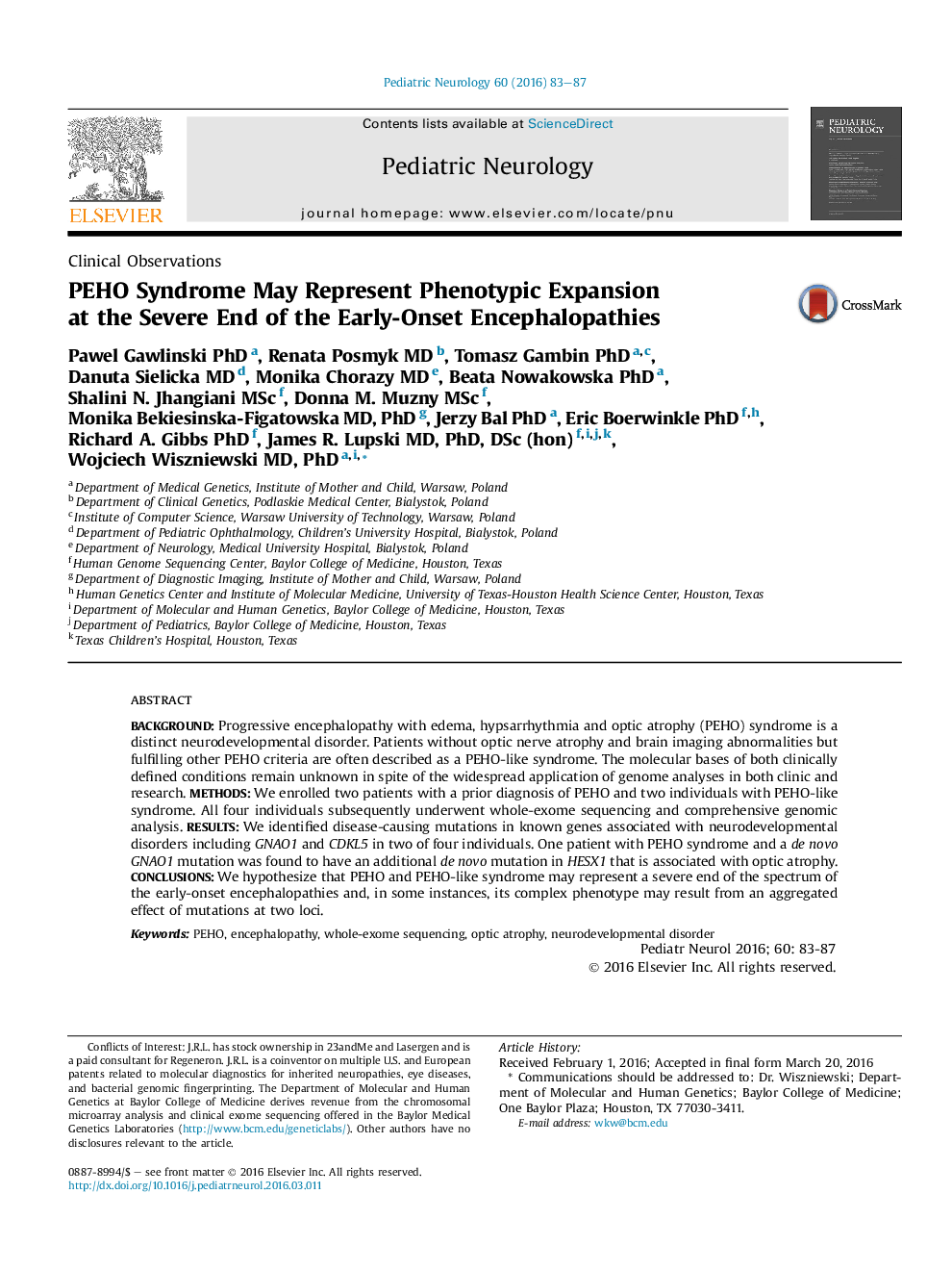| Article ID | Journal | Published Year | Pages | File Type |
|---|---|---|---|---|
| 3084288 | Pediatric Neurology | 2016 | 5 Pages |
BackgroundProgressive encephalopathy with edema, hypsarrhythmia and optic atrophy (PEHO) syndrome is a distinct neurodevelopmental disorder. Patients without optic nerve atrophy and brain imaging abnormalities but fulfilling other PEHO criteria are often described as a PEHO-like syndrome. The molecular bases of both clinically defined conditions remain unknown in spite of the widespread application of genome analyses in both clinic and research.MethodsWe enrolled two patients with a prior diagnosis of PEHO and two individuals with PEHO-like syndrome. All four individuals subsequently underwent whole-exome sequencing and comprehensive genomic analysis.ResultsWe identified disease-causing mutations in known genes associated with neurodevelopmental disorders including GNAO1 and CDKL5 in two of four individuals. One patient with PEHO syndrome and a de novoGNAO1 mutation was found to have an additional de novo mutation in HESX1 that is associated with optic atrophy.ConclusionsWe hypothesize that PEHO and PEHO-like syndrome may represent a severe end of the spectrum of the early-onset encephalopathies and, in some instances, its complex phenotype may result from an aggregated effect of mutations at two loci.
